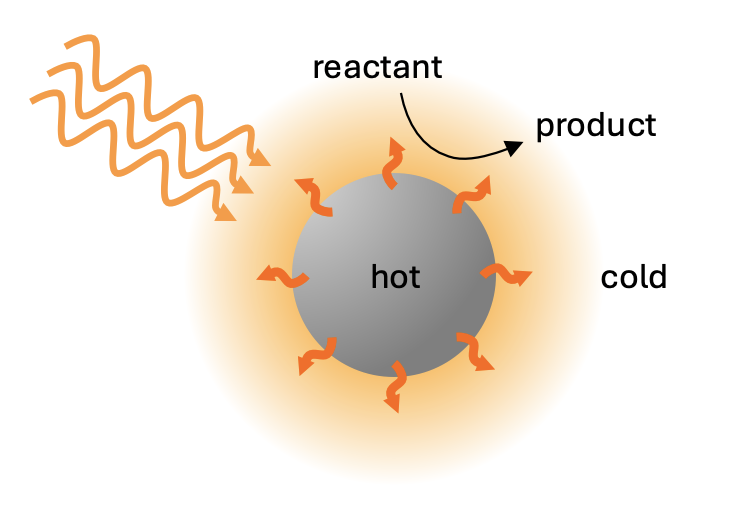Plasmonic photochemistry: targeted heating with metal nanoparticles
R. Kamarudheen, G. Kumari, S.H.C. Askes, A. Baldi>
Department of Physics and Astronomy, Vrije Universiteit Amsterdam, De Boelelaan 1081, 1081 HV Amsterdam, The Netherlands
Metal nanoparticles strongly absorb light thanks to light-driven oscillations of their free electrons called plasmon resonances. The decay of these resonances can be used to drive chemical reactions via photothermal heating of the surrounding environment. In this talk, I will cover fundamental aspects of plasmonics and show two examples from our group’s work on how the spatial and temporal control of plasmonic photothermal effects can drive nanomaterial synthesis [1] and heterogeneous catalysis [2].

Photothermal heating of plasmonic nanoparticles leads to transient and localized temperature gradients that activate chemical reactions.
[1] R. Kamarudheen, G. Kumari, and A. Baldi, Nature Communications 11:3957 (2020)
[2] A. Baldi and S. H. C. Askes, ACS Catalysis 13, 3419-3432 (2023)

